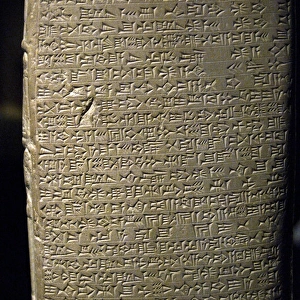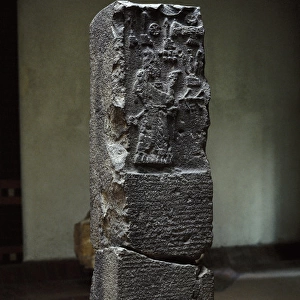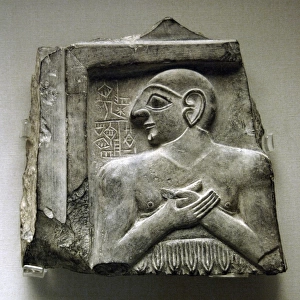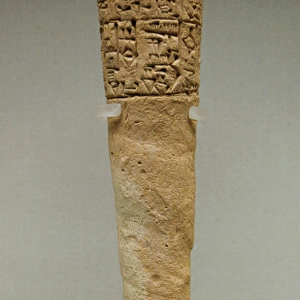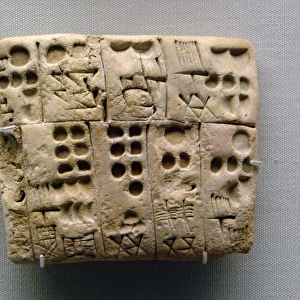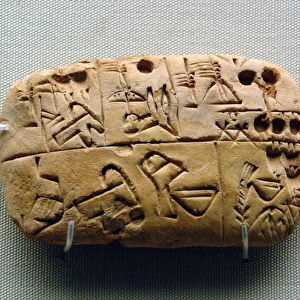Home > Europe > France > Paris > Sights > Louvre
Esarhaddon (681-669BC). King of the Sargonid Dynasty of Neo
![]()

Wall Art and Photo Gifts from Mary Evans Picture Library
Esarhaddon (681-669BC). King of the Sargonid Dynasty of Neo
Esarhaddon (681-669BC). King of the Sargonid Dynasty of Neo-Assyrian Empire. Square stele. The inscription records that he restored the temple of Marduk, Babylon. 678-669 BC. Babylonia Exposure. Louvre. Paris
Mary Evans Picture Library makes available wonderful images created for people to enjoy over the centuries
Media ID 14338012
© Thaliastock / Mary Evans
Antique Babylon Cuneiform Dynasty Exposure Inscribed Inscription Louvre Neart Neo Assyrian Script Scripture Stele
FEATURES IN THESE COLLECTIONS
> Europe
> France
> Paris
> Museums
> The Louvre
> Europe
> France
> Paris
> Sights
> Louvre
EDITORS COMMENTS
This square stele, dating back to the 7th century BC, showcases the regal presence of Esarhaddon, a significant king of the Sargonid Dynasty of the Neo-Assyrian Empire. Esarhaddon ruled from 681-669 BC, and this artifact is a testament to his reign and his deep connection to Babylon. The intricately carved stele, now housed in the Louvre Museum in Paris, bears an inscription that records Esarhaddon's restoration of the temple of Marduk, the patron deity of Babylon. The inscription is written in cuneiform script, an ancient writing system that was commonly used in the Near East during this time. Esarhaddon's reign was marked by a period of relative peace and stability, allowing for the flourishing of art and culture. This stele is a prime example of the artistic achievements of the Neo-Assyrian Empire during this time. The intricate details and precise carving demonstrate the skill and craftsmanship of the artisans who created it. The stele's historical significance extends beyond the restoration of the temple of Marduk. It also provides valuable insights into the political and religious climate of the Neo-Assyrian Empire during Esarhaddon's reign. The inscription sheds light on the king's role as a devout ruler who prioritized the welfare of his people and the maintenance of the religious institutions that were central to their lives. This ancient artifact is a reminder of the rich history and cultural achievements of the Neo-Assyrian Empire and the Sargonid Dynasty, and serves as an enduring symbol of the enduring legacy of Esarhaddon's reign.
MADE IN AUSTRALIA
Safe Shipping with 30 Day Money Back Guarantee
FREE PERSONALISATION*
We are proud to offer a range of customisation features including Personalised Captions, Color Filters and Picture Zoom Tools
SECURE PAYMENTS
We happily accept a wide range of payment options so you can pay for the things you need in the way that is most convenient for you
* Options may vary by product and licensing agreement. Zoomed Pictures can be adjusted in the Cart.


